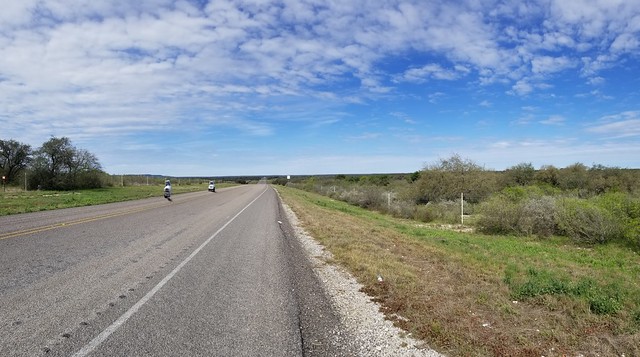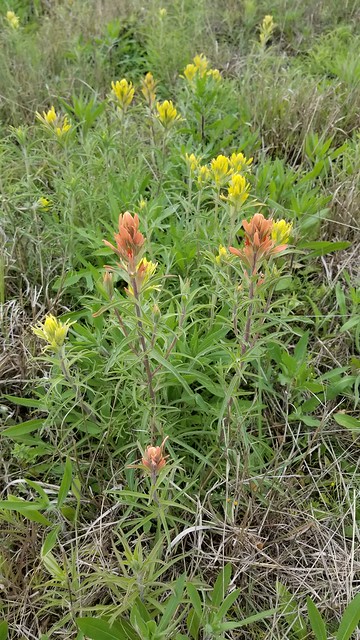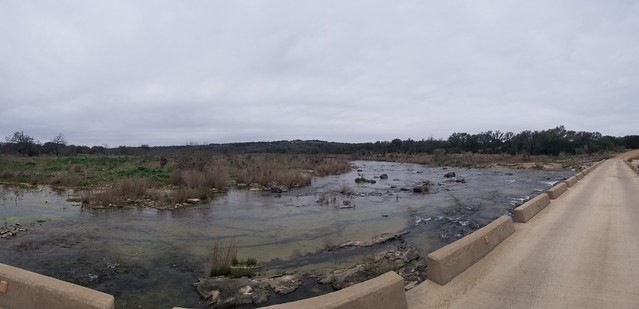A very short update – we clicked off approximately 70 miles today, riding US 90 from Uvalde to Del Rio. I’m not distance crazed, but the route was pretty flat, there was a slight tailwind and a Warmshowers host in Del Rio. Why not go for it? It was good riding – not exactly flow state, but something close. My legs were turning the pedals, the road was straight and I had a chance to watch birds and wildflowers, horizon lines and cloud deck. Today’s big sighting (not new, but I love seeing them) was a Caracara. The next section, especially Comstock to Marathon, is supposed to be pretty isolated. I’m going to restock tomorrow morning before heading to Seminole Canyon, but there may be a bit of a gap in blog updates. See y’all on the other side!
Uvaldeeee
Checking in from Uvalde, Texas. A great few days of riding – I’m starting to get my rhythm going. A morning routine of making coffee, eating and breaking camp, riding for a good long time, and pulling in to the night’s camp site, getting set up, eating, showering, replenishing water bottles and having a bit of a nap. Again narrative to follow, but before that…
The wildflowers are getting underway!
Report from the road!
Coming to you from *clap clap clap clap* deep in the heart of Texas! I’m taking a rest day in Fredricksburg; though I’ve only been moving west for 2 days, I put a lot of miles and saddle time in kicking around Austin.Some impressions, and a more detailed chronology below the fold.
The experience so far has re-affirmed that, for me, the best way to really see (and hear and smell & that’s important) the world I’m moving through is pedaling along on a bike. Petrichor, the repeated kee-ah of frisky red shouldered hawks and small wildflowers right on the road margin are all things that are tougher to take in when one is moving faster. A convertible or a motorcycle might do it, but for me it’s all about the bike. On earlier rides I’ve found strangers consider me approachable – perhaps a “dude is probably crazy, but good crazy” vibe? Put a wee adventure teckel in a basket behind you and approachability becomes sheer Lotte-animal attraction.
The bike has been performing beautifully. It’s a good solution to hauling an extra 16-20 pounds of dog and dog food and probably 7 or 8 of camera, lenses and electronics. It’s not fast up hill but it’s geared perfectly – I just downshift and goooo slooooow.
A more detailed narrative follows…
A note on providential timing
Today is Fat Tuesday – Mardi Gras! – and I am in Austin, getting ready to head out on the Big Bike Ride tomorrow. The Mardi Gras Indian chant “Indian Red” supplied both the motto for the ride and the bike’s first name: “M’allé couri dans deser” which became “Madi cu defio, en dans dey”. I didn’t plan it, but it’s very fitting that I’m beginning my run into the wilderness the day after the parades, chants and partying come to a crescendo!





